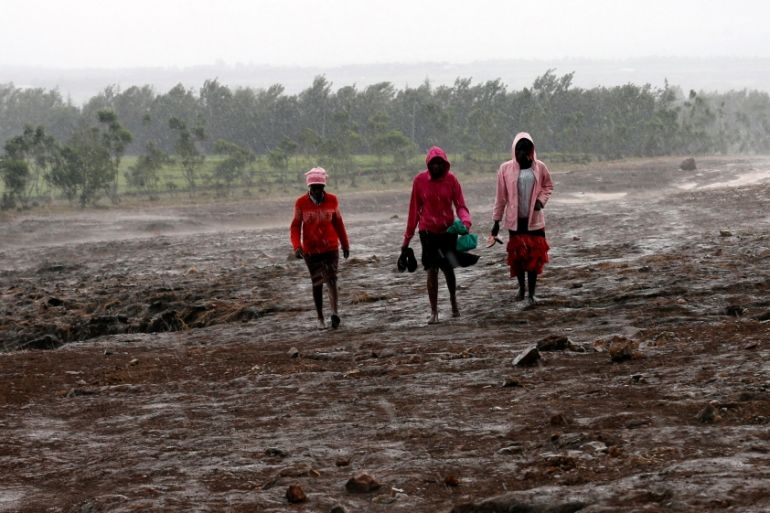Dozens killed in Kenya landslide after torrential rains
Search for survivors continues in West Pokot region following heavy overnight rains, officials say.

At least 36 people, including seven children, have been killed by landslides triggered by unusually heavy rains in northwestern Kenya, a local official said.
The downpour began on Friday in West Pokot County, which borders Uganda, and worsened overnight, causing flooding and mudslides that swept away four bridges and left the worst-affected village, Muino, unaccessible by road.
Keep reading
list of 3 itemsKenya drought: More than a million people face starvation
Kenyan scientists harvest eggs to save northern white rhinos
More:
“We can confirm that the number of those dead has sadly reached 36. Some people who we thought were lost have been found dead,” Samuel Poghisio, a senator from the county, told Reuters news agency by phone.
“More people are marooned and the entire village is at risk of being wiped out by the floods,” the county’s governor, John Lonyangapuo, told Reuters as he waited for a helicopter to transport him to survey the damage.
He added that rescue efforts were under way in the area, where more than 500 vehicles were stuck on roads damaged by the landslides.
Rescue efforts have been delayed because roads have been cut and bridges closed after streams turned into raging torrents.
“Massive landslides reported in various areas of West Pokot County following heavy downpour,” Kenya Red Cross said in a message, adding that its emergency response teams had been deployed to help.
Kenyan President Uhuru Kenyatta said in a statement that he had deployed rescue personnel from various agencies including the army and the police to try to stop the “further loss of lives”.
Regional effect
The landslide came amid weeks of destructive rains and flooding across East Africa.
Downpours have displaced tens of thousands in Somalia and submerged whole towns in South Sudan, while dozens of people have been killed in flash floods and landslides in parts of Ethiopia and Tanzania.
In South Sudan alone, close to a million people have been affected amid growing fears of disease and starvation.
Floods hit East Africa regularly, but scientists say they have recently been exacerbated by a powerful climate phenomenon in the Indian Ocean stronger than any seen in years.
The extreme weather is blamed on the Indian Ocean Dipole – a climate system defined by the difference in sea surface temperature between western and eastern areas of the ocean.
The ocean off East Africa is currently far warmer than usual, resulting in higher evaporation causing rain over the continent.
In April 2018, landslides in Kenya killed 100 people and displaced thousands.